Bee Swarms
Report a Swarm
Report a swarm and I will help you find a beekeeper to safely relocate the bees.
If you've spotted a honey bee swarm, please:
- Take a photo if possible (safely from a distance)
- Verify it's actually a honey bee swarm using the guide below
- Fill out our Swarm Report Form
What is a Bee Swarm?
A bee swarm is a natural part of honey bee colony reproduction. When a colony becomes too large for its current home, more than half of the bees will leave with the old queen to find a new home, while the remaining bees stay and raise a new queen.
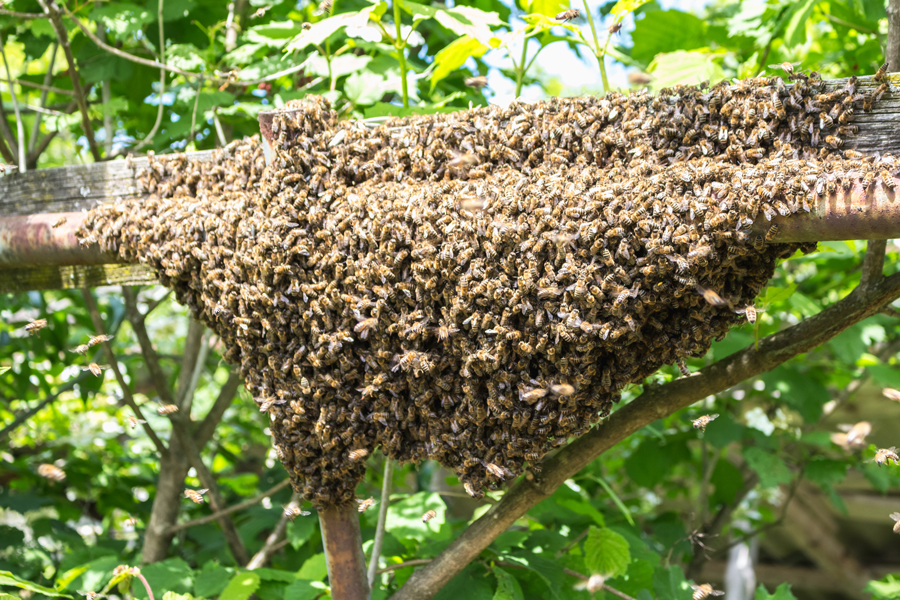
A typical honey bee swarm cluster
Is it Really a Honey Bee Swarm?
It's essential to correctly identify whether you're dealing with honey bees or wasps. Here are key differences:
Honey Bee Swarms:
- Form a tight cluster of bees
- Usually found on tree branches or structures
- Temporary - may only stay for hours or days
- Bees are fuzzy and golden-brown
- Generally very docile during swarming
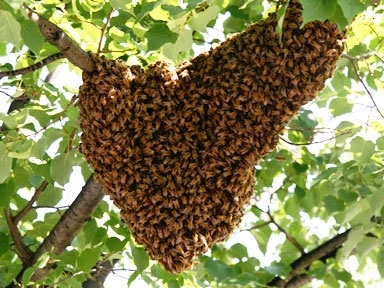
A typical honey bee swarm
Wasp Nests (Not Bee Swarms):
- Create paper-like nests
- Often under eaves or in bushes
- Permanent structure that grows over time
- Wasps are smooth and more aggressive
- Will defend their nest if disturbed
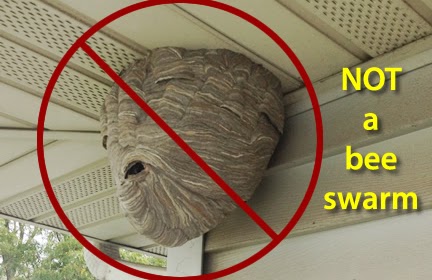
A wasp nest (not a bee swarm)
Other Types of Wasp Nests:
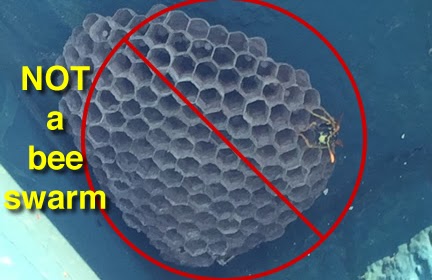
Yellowjacket nest - notice the paper-like structure and exposed cells
How to Identify Honey Bees
It's important to know what a honey bee looks like compared to similar insects. Many people confuse wasps and hornets for honey bees. Here's a helpful comparison:
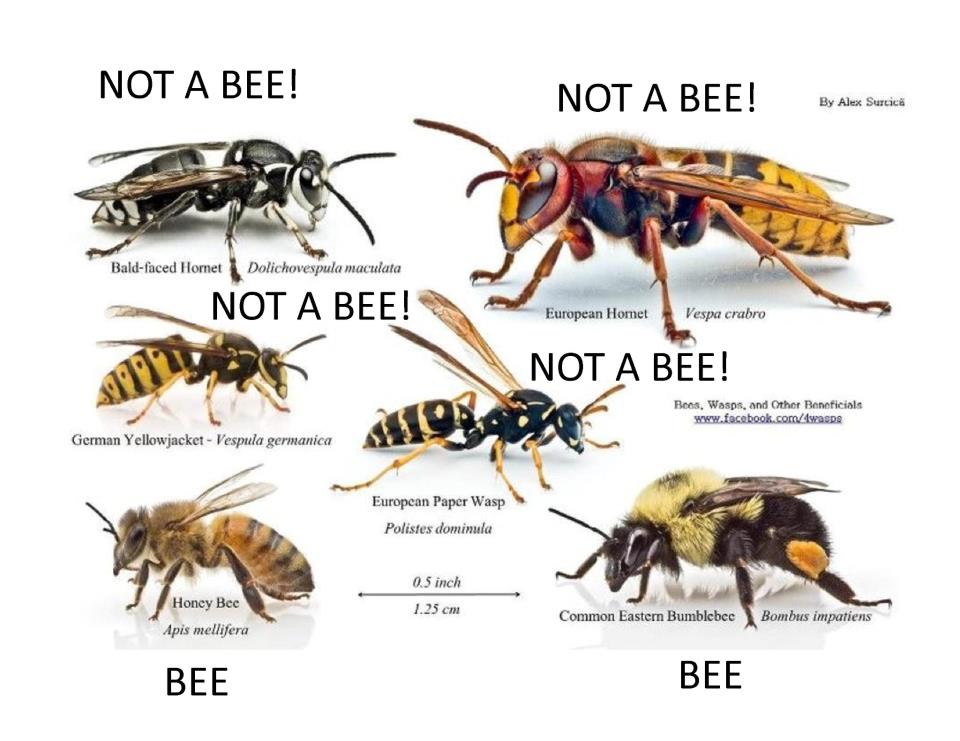
This guide shows the differences between honey bees and similar insects. True honey bees (Apis mellifera) have fuzzy, golden-brown bodies, while wasps and hornets (like the Bald-faced Hornet, European Hornet, German Yellowjacket, and European Paper Wasp) are smooth-bodied with bright yellow markings. Note that bumblebees, while also bees, are different from honey bees and are also beneficial pollinators.
Important Notes About Swarms
While a swarm is formed, the honey bees are extremely gentle. They have no home to protect, no young to care for, and no honey stores. However, you should still:
- Keep a safe distance
- Do not spray water or chemicals on the swarm
- Keep children and pets away from the area
- Call a beekeeper right away - swarms may only stay temporarily
- A beekeeper can safely relocate the swarm to a proper hive where they will be cared for